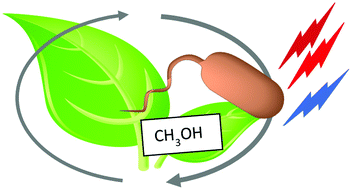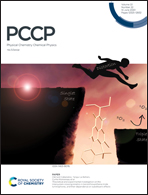The first molecular characterisation of blue- and red-light photoreceptors from Methylobacterium radiotolerans†
Abstract
Methylobacteria are facultative methylotrophic phytosymbionts of great industrial and agronomical interest, and they are considered as opportunistic pathogens posing a health threat to humans. So far only a few reports mention photoreceptor coding sequences in Methylobacteria genomes, but no investigation at the molecular level has been performed yet. We here present comprehensive in silico research into potential photoreceptors in this bacterial phylum and report the photophysical and photochemical characterisation of two representatives of the most widespread photoreceptor classes, a blue-light sensing LOV (light, oxygen, voltage) protein and a red/far red light sensing BphP (biliverdin-binding bacterial phytochrome) from M. radiotolerans JCM 2831. Overall, both proteins undergo the expected light-triggered reactions, but peculiar features were also identified. The LOV protein Mr4511 has an extremely long photocycle and lacks a tryptophan conserved in ca. 75% of LOV domains. Mutation I37V accelerates the photocycle by one order of magnitude, while the Q112W change underscores the ability of tryptophan in this position to perform efficient energy transfer to the flavin chromophore. Time-resolved photoacoustic experiments showed that Mr4511 has a higher triplet quantum yield than other LOV domains and that the formation of the photoproduct results in a volume expansion, in sharp contrast to other LOV proteins. Mr4511 was found to be astonishingly resistant to denaturation by urea, still showing light-triggered reactions after incubation in urea for more than 20 h. The phytochrome MrBphP1 exhibits the so far most red-shifted absorption maxima for its Pr- and Pfr forms (λmax = 707 nm and 764 nm for the Pr and Pfr forms). The light-driven conversions in both directions occur with relatively high quantum yields of 0.2. Transient ns absorption spectroscopy (μs–ms time range) identifies the decay of the instantaneously formed lumi-intermediate, followed by only one additional intermediate before the formation of the respective final photoproducts for Pr-to-Pfr or Pfr-to-Pr photoconversion, in contrast to other BphPs. The relatively simple photoconversion patterns suggest the absence of the shunt pathways reported for other bacterial phytochromes.

- This article is part of the themed collection: 2020 PCCP HOT Articles


 Please wait while we load your content...
Please wait while we load your content...